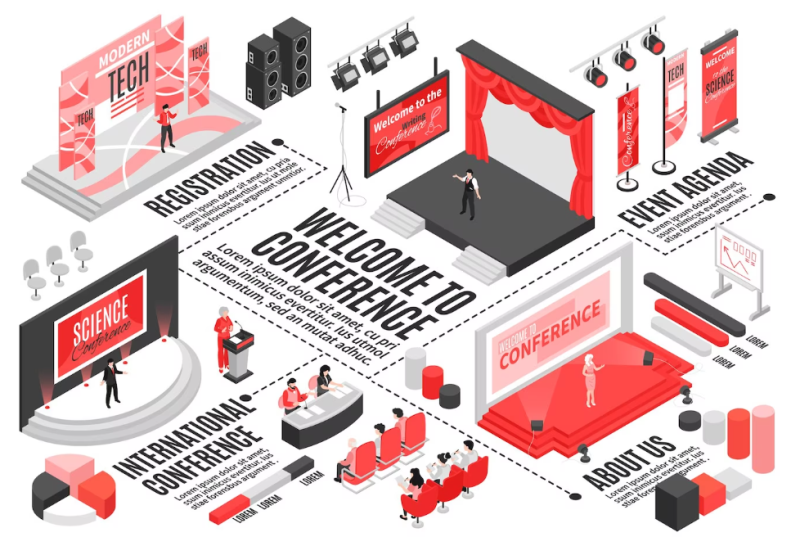Trade shows offer a unique opportunity for businesses to showcase their products and services to a highly targeted audience. However, with countless competitors vying for attention on the convention floor, it’s crucial to make your booth stand out. Creating engaging trade show presentations and demos is the key to attracting and retaining the interest of potential customers. In this article, we’ll explore strategies and best practices for crafting presentations and demos that leave a lasting impression.
1. Know Your Audience
Before diving into the design and content of your presentation or demo, it’s essential to understand your audience. What are their pain points, interests, and needs? Tailoring your presentation to address these specific factors will resonate more with attendees and increase engagement.
2. Define Clear Objectives
What do you want to achieve with your trade show presentation or demo? Is it to educate, entertain, or inspire attendees? Having clear objectives will help you create content that aligns with your goals and keeps your messaging focused.
3. Storytelling Matters
Storytelling is a powerful tool for engaging an audience. Craft a compelling narrative that communicates the value of your product or service. Share success stories or case studies that illustrate how your offering has benefited others. People remember stories more than facts and figures.
4. Visual Impact
Design plays a significant role in capturing attention. Use high-quality graphics, vibrant colors, and professional visuals that align with your brand identity. Ensure that your booth has an attractive and cohesive design that reflects your company’s image.
5. Interactivity is Key
Interactive elements can significantly enhance engagement. Consider incorporating touchscreens, virtual reality (VR), or augmented reality (AR) experiences that allow attendees to interact with your product or service directly. Interactive demos make your booth memorable.
6. Keep It Concise
Trade show attendees are often pressed for time. Keep your presentation or demo concise and to the point. Avoid information overload and focus on showcasing the most critical features and benefits of your offering.
7. Engage All Senses
Appealing to multiple senses can create a memorable experience. Incorporate audio, video, and even scents or tactile elements that relate to your product or service. Providing a multi-sensory experience can leave a lasting impression.
8. Live Demonstrations
Live demonstrations can be incredibly effective in trade show presentations. They allow attendees to see your product or service in action. Be sure to rehearse your demonstrations to ensure they run smoothly and captivate your audience.
9. Encourage Participation
Engage attendees by encouraging them to participate actively. Host contests, giveaways, or challenges related to your product or service. Provide incentives for attendees to interact with your booth, such as exclusive discounts or freebies.
10. Collect and Leverage Data
Use technology to collect attendee data during your presentations or demos. This information can be invaluable for follow-up marketing efforts. Send personalized emails or connect with attendees on social media platforms to nurture leads after the trade show.
11. Training and Staffing
Your booth staff should be well-trained and knowledgeable about your product or service. They should also be engaging, approachable, and ready to answer questions. Excellent customer service is a vital part of creating a positive impression.
12. Measure Success
After the trade show, evaluate the success of your presentation or demo. Did it meet your objectives? Analyze attendee feedback, lead generation, and sales conversions to determine the impact of your efforts. Use this data to refine your strategy for future events.
In conclusion, creating engaging trade show presentations and demos requires careful planning and creativity. By knowing your audience, defining clear objectives, and implementing interactive and visually appealing elements, you can capture the attention of attendees and leave a lasting impression. Remember that trade shows are not just about showcasing your product; they’re an opportunity to connect with potential customers and build valuable relationships for the future.

